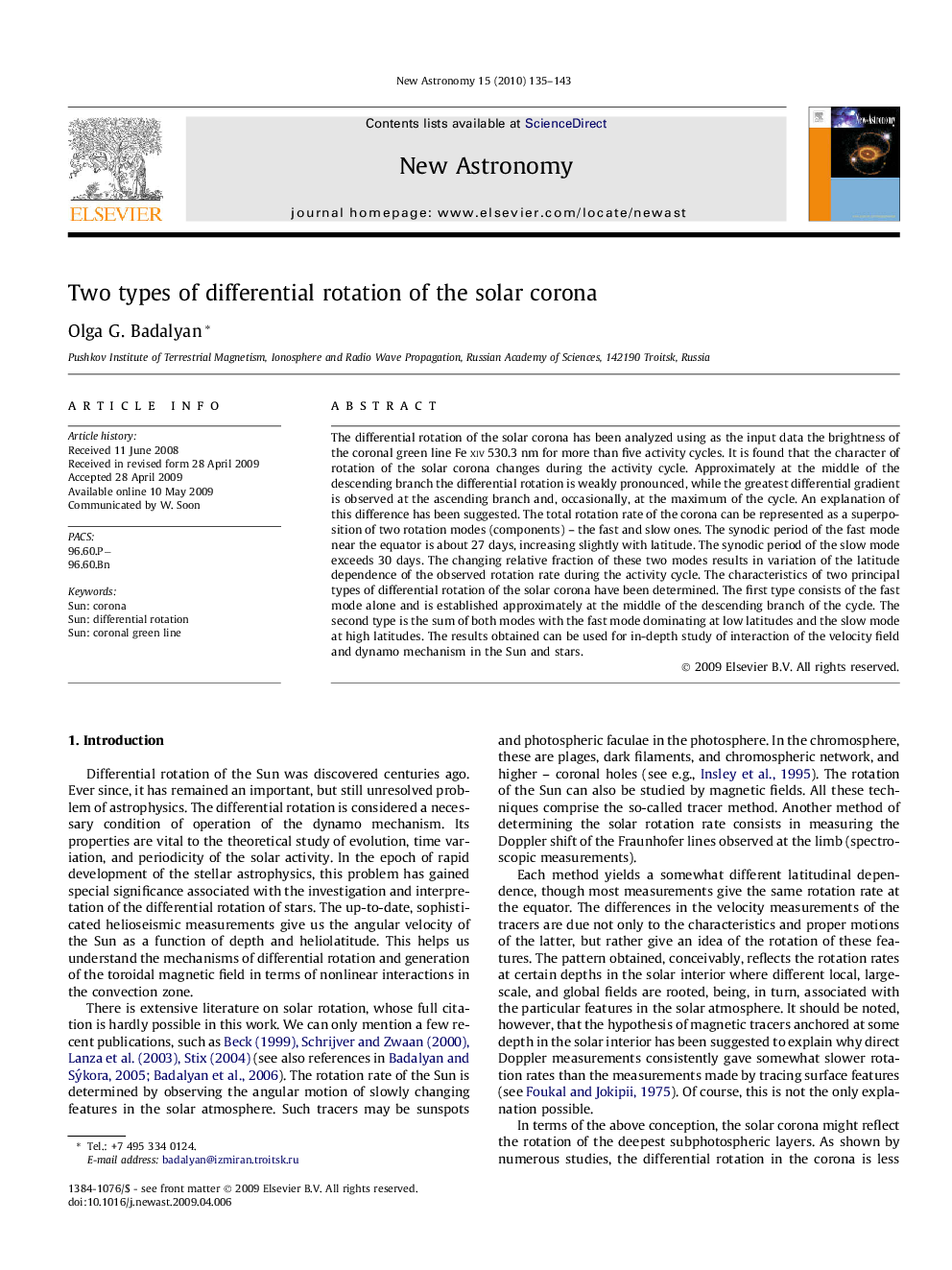| Article ID | Journal | Published Year | Pages | File Type |
|---|---|---|---|---|
| 1779493 | New Astronomy | 2010 | 9 Pages |
The differential rotation of the solar corona has been analyzed using as the input data the brightness of the coronal green line Fe xiv 530.3 nm for more than five activity cycles. It is found that the character of rotation of the solar corona changes during the activity cycle. Approximately at the middle of the descending branch the differential rotation is weakly pronounced, while the greatest differential gradient is observed at the ascending branch and, occasionally, at the maximum of the cycle. An explanation of this difference has been suggested. The total rotation rate of the corona can be represented as a superposition of two rotation modes (components) – the fast and slow ones. The synodic period of the fast mode near the equator is about 27 days, increasing slightly with latitude. The synodic period of the slow mode exceeds 30 days. The changing relative fraction of these two modes results in variation of the latitude dependence of the observed rotation rate during the activity cycle. The characteristics of two principal types of differential rotation of the solar corona have been determined. The first type consists of the fast mode alone and is established approximately at the middle of the descending branch of the cycle. The second type is the sum of both modes with the fast mode dominating at low latitudes and the slow mode at high latitudes. The results obtained can be used for in-depth study of interaction of the velocity field and dynamo mechanism in the Sun and stars.
